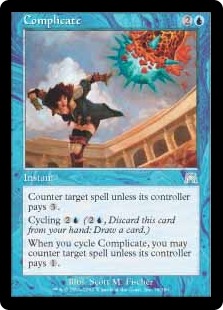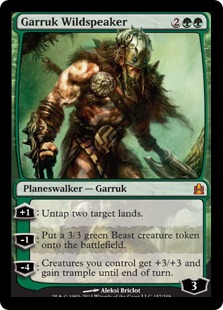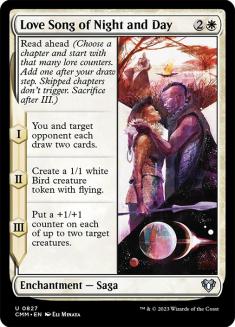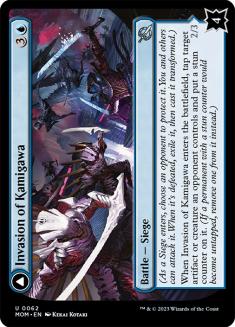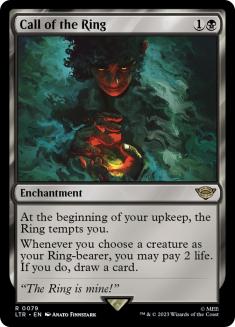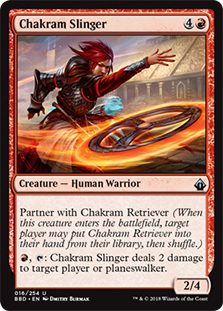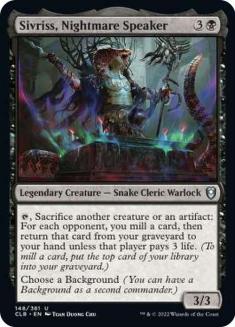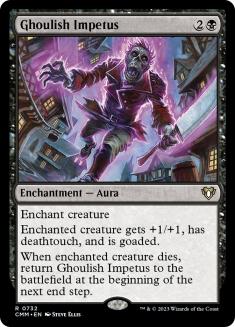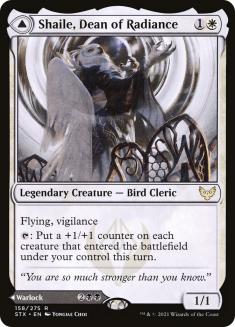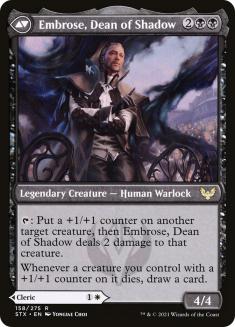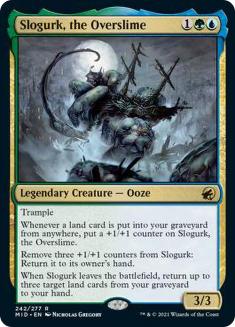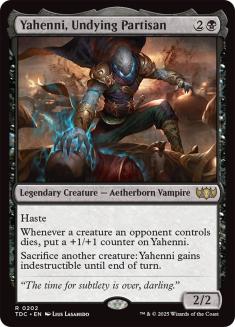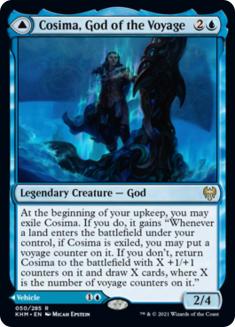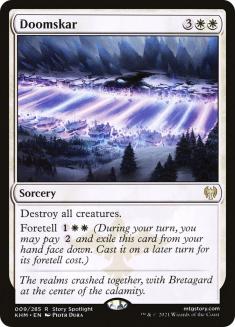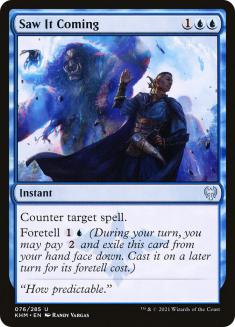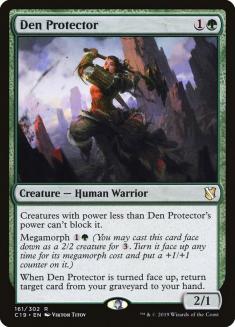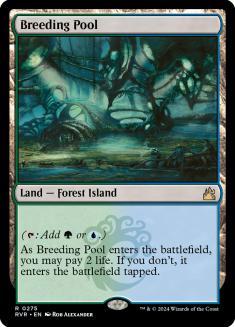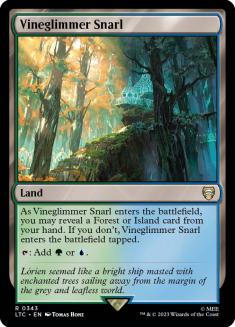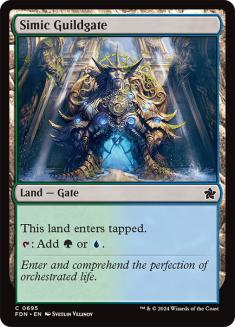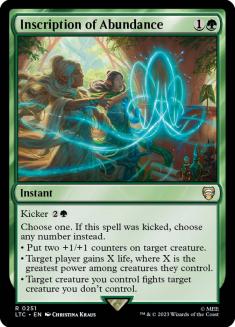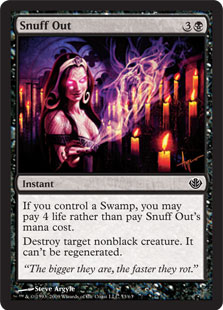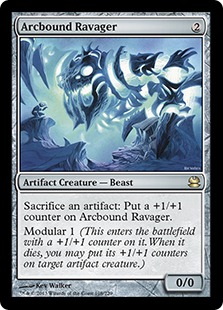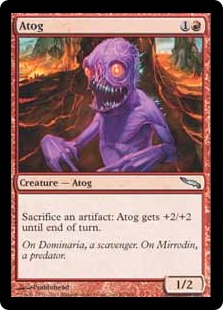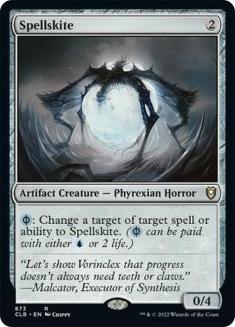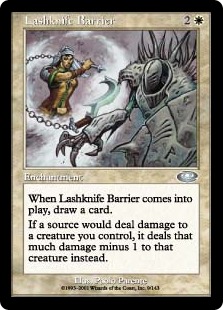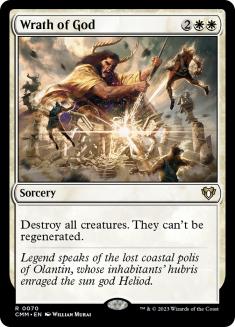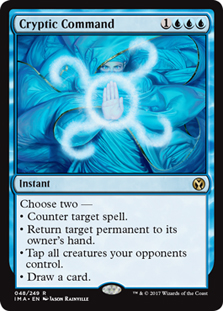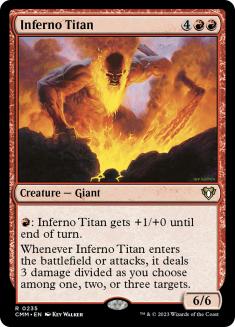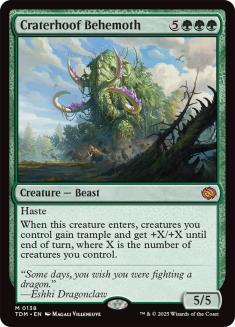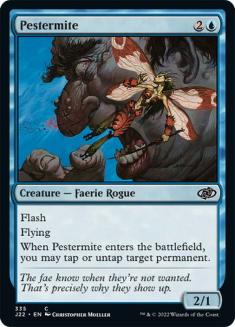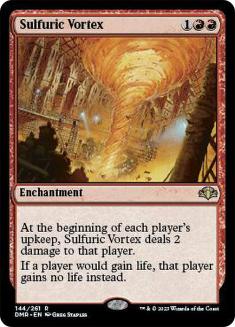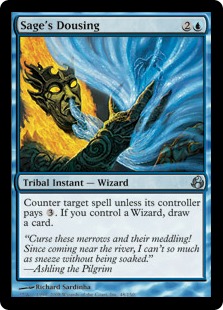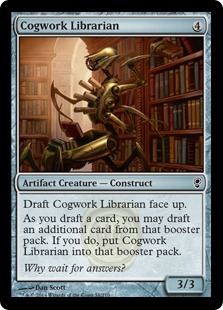Greetings, gamers! I hope everyone is enjoying spooky season and getting lots of Cube drafts in! Today I’ll be going over a topic that’s spooky in its own right: complexity creep. As we see an increase in the number of cards printed as well as the number of words printed on the average Magic card, an already complicated game only becomes increasingly complicated all the time. The beauty of the game is that we can play it however we want, and as Cube designers, we have a lot of control over the level of complexity in the experiences that we curate.
That curation, the fact that one player brings the supplies for everyone to play, is one of Cube Draft’s greatest strengths. I can show up with 360 cards and a grip of basic lands, and seven other players can draft with me, assuming they have a working understanding of how to play Magic. The more complex my Cube environment is, the less true that statement becomes. As such, I always try to be mindful of providing the path of least resistance to get a player with no Cube experience to enjoy the format. Biasing towards keeping things simple where possible is essential to this end.
I’ll define and discuss three types of complexity today, in addition to offering insights on how I try to keep them all to a minimum and things to look out for while doing so. These are card complexity, game complexity, and format complexity. Let’s tackle them one at a time.
Card Complexity
The most immediate barrier to playing with a card is being able to read it and understand what it does. “Reading the card explains the card” isn’t always true! Some Cube designs assume more or less familiarity with the game or specific formats than others, but whether you can understand what a card does using only the printed text on the card is a useful heuristic. A lot of Cubes shy away from planeswalkers for whatever reason, and the reason I can most abide is that, if I show a new player a Garruk Wildspeaker, I don’t expect them to be able to tell me what the card does or how it plays.
Sagas are a good comparison point to planeswalkers in terms of how complex the card type is as a baseline, but there’s enough reminder text on them that they tend to read very intuitively. A Saga without reminder text would be a lot for a new or lapsed player to take in, but there’s enough there to understand them without much of any outside help if you’ve played much Magic. Similarly, Sieges do a solid job of communicating a lot of information just by reading them, even if there’s more going on with them than your average enchantment.
Deer in the Headlights
Card complexity is where you’ll notice the draft process can lag the most. When a player tries to read a card and gets that deer in the headlights look, you know something has gone awry. And sometimes it’s easy enough to ignore one or two cards, but sometimes a player encounters information that they can’t process and just stops bothering with the rest of it. That experience is why caring about complexity is so important.

You’ll often see players joke about the initiative in this regard, and for as much as I feel that White Plume Adventurer is a welcome addition to Vintage Cube it is totally fair to cite cards that generate emblems or use some other external game piece with additional rules text are cards that players cannot understand simply by reading them. This is why you’ll see me advocate using mechanics like The Ring tempting you as a heavy feature of a format if used at all. There’s just way too much going on with that sort of thing to justify the inclusion of one card.
Extraneous Text
Extraneous card text is another place where things can get excessively complex on a per-card basis. While drafting, it can be pretty distracting to read the words “Partner” or “Choose a Background” when they have nothing to do with the game you’re about to play. I’m less likely to actually even read the entirety of cards with these abilities for this reason. Tangentially, I don’t know what any card that goads a creature does, as those cards aren’t designed for one-on-one games of Cube!
Extraneous text can show up on cards from Standard booster releases, too, with Strixhaven standing out as having a lot of text on cards, with much of it being distracting. For example, consider Shaile, Dean of Radiance. I like the front side, even if it is a little weak. It adds something meaningful to tokens and counters themes and does so at a reasonable rate. But then it also just has an entire extra card on the back side! While drafting, this will generally mean desleeving and resleeving the card, an exercise that Embrose, Dean of Shadow is simply not worth.
Disjointed Abilities
Other cards I avoid because they personally give me headaches have disjointed abilities. The two specific examples that come to mind are not at the same level of complexity, but both leave me feeling like I’m missing something when I read them. I want to talk about Slogurk, the Overslime and Yahenni, Undying Partisan.
Slogurk arguably makes sense as a card that cares about a specific thing. It makes you want to put lands into your graveyard, and it opens up some combo potential in that space. Where the card loses me: why does it get bigger to build towards returning to my hand, and why is returning it to my hand the built-in part of how I make the land recursion work? You can just attack with your giant Slogurk, but then why did I have to read so much text?
The card offers more to the player by being so wordy, but I just don’t get why this is all on one card and functions in this way. The design just feels really inelegant to me and is a prime example of less is more, in that I would love a version of this card that, instead of having three abilities, just uses the counters on it while on the battlefield to return lands from your graveyard to your hand. This would also open up room for flavor text to answer the question on everyone’s mind; “Who the hell is Slogurk?”
Yahenni is a much easier read, yet has left me feeling like I misread the card on more than one occasion. Having a sacrifice outlet that you can use as many times as you have creatures to sacrifice per turn with a triggered ability when opposing creatures die is sort of an uncanny valley juxtaposition to me. It cares about creatures dying and lets me sacrifice creatures… but it doesn’t care about my creatures dying… The card is stronger for doing both of these things, but something about it just feels off, which registers to me as complex in an unappealing way.
Just Plain Rough
And then there are cards that just don’t read smoothly, no matter how many times you try. I know that nearly every game of Magic that I play involves matters more complex than Cosima, God of the Voyage, but that doesn’t make me any more willing to actually read the card. All of the “mays” and “if you do’s” and “if you don’ts” couldn’t possibly appeal to me, the “deal three damage to any target” enjoyer.
I was working on a Cube designed for less experienced players recently, and morph and foretell stood out as two non-starters for the new player experience. These mechanics play better when you have multiple cards with the ability to amplify the strategic complexity, but the range of effects, timing, and costs to cast a foretold card or unmorph a creature are impossible to derive without just showing your opponent the face-up card. If your Cube’s only morph is Den Protector and you can just tell that to your opponent and show them the card, that’s one thing, but paying a cost to put a card facedown has very high potential to be a “deer in the headlights” moment for a player who has never played with these mechanics before.
Managing Card Complexity
So that’s a lot of things to avoid regarding individual card complexity, but what are some things you can do as a designer to help keep complexity low? The biggest thing is to use a lot of cards that players will be familiar with from other formats. These can be general Cube staples, cards that defined Limited or Constructed formats, and just generally iconic cards. Vintage Cube has a steep learning curve, but understanding what Black Lotus does isn’t a particularly difficult aspect of that equation.
Using familiar land cycles also really helps to ground the Cube experience, as just figuring out your manabase can become a pain point for complexity if you veer too far from what we usually see. Shocklands make a lot of intuitive sense; they offer mana of one of two colors and they can enter untapped, but there are only so many shocklands you can play untapped before it becomes a problem, and more importantly, there are a lot of Magic formats where they are commonly played, so players will encounter them a lot.
Contrast this to Vineglimmer Snarl and company. These lands are so weak that they’ve only reluctantly shown up in Standard in small numbers, and I wouldn’t expect somebody who hasn’t been disappointed by them before to intuit just how close they are to Guildgates in practice. Keeping to powerful and commonly played mana-fixing gives players one less thing to worry about, which goes a long way in reducing the impact of complexity in other places.
Even in situations where reading the card explains the card, I still find it to be good practice to limit the number of cards that you expect players will have to read in your Cube, and also limit the amount of reading required of those cards. It’s a lot easier to parse a few new lines of text sandwiched between a Ponder and a Hero’s Downfall than it is to read three cards you’ve never seen before.
Aside on Language, Different Printings, and Alters
While we’re discussing reading the card explaining the card and general card familiarity, I’d be remiss if I didn’t touch on different card printings. Different language printings, alternate versions of cards like Secret Lair releases, and card alters are common ways for Magic players to express themselves and collect things that they love. Aesthetic customization is a positive aspect of Magic, but I heavily bias towards a card’s first printing in English for my Cubes, just to make it the most likely that players will be able to understand the game pieces that they’re holding in their hands as well as sitting across from at the table. I don’t say this to yuck anyone’s yum, but this is absolutely an aspect of card complexity.
Game Complexity
In some ways, game complexity is a direct consequence of card complexity, but as Magic players, we know full well that very complicated games can be played even with very simple cards. If you’ve played a lot of Booster Draft, then you know that the complexity of combat on a given turn has a lot to do with what tricks your opponent is representing with the mana they’ve left untapped, and the more one- and two-mana options there are in a format, the more complicated it becomes to sniff out what they might have. In some Cubes, we also have zero-mana options to worry about!
As you become more experienced with the game, a lot of this boils down to the opponent potentially having a counterspell, a removal spell, or a pump spell, though Cubes with especially low mana curves where the opponent can do four things with three mana can be really difficult to navigate. I am a fan of this amount of interaction, which I highlight in my Tempo Twobert, but that is not a format that I consider especially friendly to newer players.
Static and Activated Abilities
Another area where games can get very complex is when permanents have a lot of static abilities and abilities that can be activated at instant speed, especially for zero mana. My Artifact Twobert is incredibly guilty of this kind of complexity, and can be one of the most headache-inducing environments I’ve ever played for this reason. One card with a confusing text box can complicate a game, and a dozen cards with simple text boxes are equally capable of doing the same.
I don’t currently maintain any Cubes with any static abilities that I believe really bog things down, but I definitely have experience with that sort of thing, too. One of the first Cubes I ever played was called “Combat Cube” and it was full of creatures with on-battlefield tricks and pump spells, but one of the most headache-inducing cards featured was Lashknife Barrier.
Looks simple, right? I can read that card and easily understand what it does. Now imagine this card in games where each player controls four or more creatures alongside cards like Kabuto Moth. These seemingly simple parts very quickly add up to very complicated games!
Token Trouble
Token generation is another thing to be mindful of when managing game complexity. Most tokens are fairly simple, and you’ll often find me just using face-down cards to represent them, with tokens of the same kind kept in distinct piles near what generated them when possible. But at some point, you make too many different kinds of tokens, or you generate tokens with abilities that need to be kept better track of, like Clues and Blood.
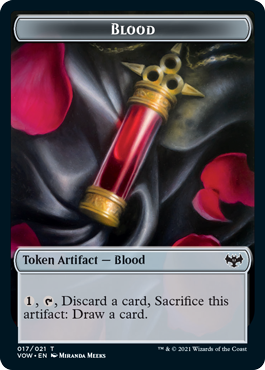
Tracking down the actual token cards goes a long way in terms of making it easier to understand what’s happening in a game, and I’m also a big fan of InfiniTokens to represent whatever you like. I’m not much of an artist, so I mostly just put out the blank white cards, but I keep a dry erase marker on hand for when even I at least want to write the names and stats of everything down.
Managing Game Complexity
So how do we mitigate game complexity? One important tool for creature decks is just featuring a lot of cards that are good at attacking and blocking. It can be fun to have some little creatures with tricky abilities, but some Goblin Guides that clearly signal, “Hey, you want to attack with this creature!” go a long way. Again, cards that regularly show up in other formats help here, as players will on-average be more familiar with the play patterns of cards that they regularly play.
Tools that simplify games are helpful in this regard, too. There are many Cubes where I have my reservations about the power level of Wrath of God relative to the power level of the creatures in that environment, but one thing that Wrath of God and other sweepers offer is that they really simplify the battlefield! There’s an old joke among Legacy players that, if you have to read the card, you should probably Force of Will it. Similarly, I’m a fan of a high volume of one-for-one removal to keep battlefields from getting too complex.
I was just a little dismissive of Wrath of God for often being a power level outlier, but I do want to say that power level outliers are useful in reducing the complexity of a game. Sometimes it’s nice to just have a hammer that you can swing and get out of whatever is going on in a game. Sublime Epiphany is often this hammer in the Arena Cubes, and Cryptic Command is another favorite of mine for getting out of whatever theoretical bind I might end up in. And for as much as I enjoy building cool engines, just casting Inferno Titan and cleaning up whatever is going on in the game is really satisfying, too!
Beyond just power level outliers, some cards that just serve as “I win” buttons are really valuable to stop the average game from spiraling into overly complex directions. Craterhoof Behemoth is in my opinion the hero of many Commander games, and stuff like Splinter Twin combo offers players a really simple plan to commit to regardless of the opponent’s plan. The longer the game goes, the more likely the battlefield is to spiral in complex ways, and cards with a singular focus of ending the game help massively in pushing back against this kind of complexity. Cards like Sulfuric Vortex that just naturally accelerate the game towards an end are very useful in this regard, too.
I know that some players are averse to these sorts of cards and would rather play long games and solve these complex puzzles, and if that’s what your group is about, then by all means! For me though, I can’t tell you how many times I’ve been Cubing and we’ve just been waiting on a match where neither player had a clear avenue to end the game, and that taxes everyone’s fun on the night. And as I always like to say, when the games are fast, even if they’re unsatisfying, you still have time to play more games!
Format Complexity
Finally, we have format complexity to address. This is similar to game complexity, and the complexity issues in my Artifact Twobert do ultimately boil down to format complexity given the sum of the parts of the guilty parties, but it was also worth calling out Arcbound Ravager for its sins as a game piece.
Format complexity is a matter of the sum of the parts of the cards in your Cube, as well as any Cube-specific rules that you might have. The Artifact Twobert is a complex format as a consequence of featuring a high volume of game pieces that lead to complex games. A small number of offenders can bog down the occasional game, but the cards for that Cube were selected expressly to be cheap artifacts that gum up the battlefield. As such, you’re unlikely to play games that aren’t complex, at which point we say that the format is just complex.
Lorwyn block provided me a strong example of something not to do in my Cubes. Lorwyn had heavy typal themes, which are cool and relatively simple if we keep things to one creature type mattering, but the block featured a lot of cards that could make multiple creature types on the same card matter. It’s one thing to support Goblins in your Cube, it’s a completely different thing to cast a Faerie Wizard and have it matter for your Spellstutter Sprite and your Sage’s Dousing. It’s just a lot to track when that becomes a consideration for every creature in your deck!
Modern Horizons Limited did a changeling typal archetype where changelings would get pumped by a myriad of lords. I always thought that was kind of neat, but when I’ve looked into something similar for Cube, it becomes tremendously complex on paper very quickly. This was a significant consideration while I worked on making the party mechanic work in Cube, and was a motivation for not including cards like Righteous Valkyrie that reference card types that weren’t my specific focus to keep the complexity of reading individual cards down, as well as the gameplay in the format at large.
Cube-Specific Rules
The other place where a Cube can have high format complexity comes from rules specific to a Cube. Things like treating all lands as snow, requiring players to draft basic lands, breaking singleton for any reason… really, any number of things that go beyond the general basic structure for a Cube. I love running Spooky Cube drafts where everybody starts with a Cogwork Librarian in their pool, but this is another level of complexity that I am tasking players with figuring out.
I think that these house rules can add a lot to the Cube experience, though they generally work better as options to try with your regular play group than additional rules to navigate for players new to your Cube. I’ll always ask everyone at the table if they’d like to start with the Cogwork Librarians or not, for example. Some quirkier Cubes have specific rules that you really can’t draft without, which can be cool space to explore. Just be mindful that these environments can have particularly steep learning curves, which is an important thing to communicate to drafters.
Complexity Is Not the Villain
None of what I’ve expressed today was written with the intention of saying that there is anything inherently bad about complexity, which I hope was evidenced by me citing several of my own Cubes as examples of high complexity! Another of Magic’s greatest strengths is that it is a very complex game that offers an infinite well of new things to learn.
Even still, it is something that we should be mindful of as Cube designers, and we want to be careful to ensure that the complexity of the game is serving us in a positive way. Mindfully managed, we can create delightfully complex Cubes for players of all skill levels and specific interests.


